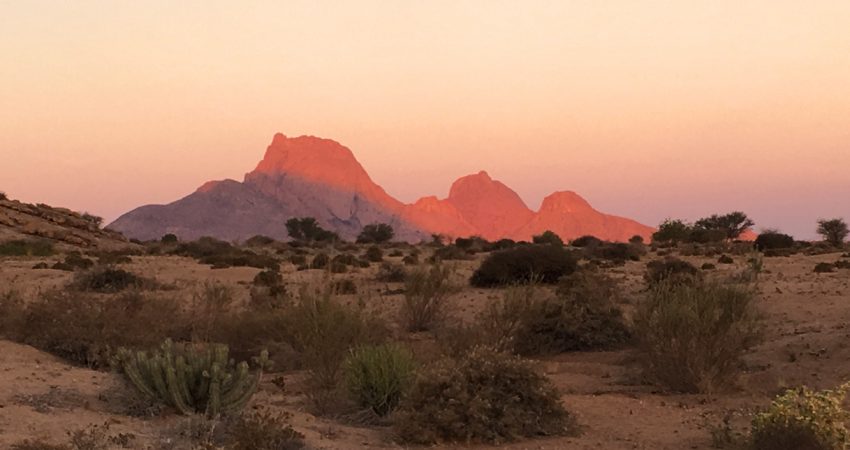Erongo, Namibia
31 January 2018
With Wen
Nicknamed the “Matterhorn of Namibia”, the Große Spitzkoppe is without a doubt Namibia’s most famous and most photographed peak. “Big pointy peak” is what the German name means, with the letter ß pronounced like “ss” in English (as in the word “essay” for example). As a granite inselberg, the Große Spitzkoppe is an isolated rock dome that sharply rises into the deep blue sky from the vast, flat desert plains like a giant arrowhead.
The Spitzkoppe area is of such splendid beauty with its unique rock formations (massive slabs of rock, giant boulders, jagged gendarmes), we decided to extend our stay and spend some more time exploring the place after ascending the adjacent Kleine Spitzkoppe the day before. Although we knew that getting to the actual summit of the Große Spitzkoppe wasn’t possible without technical equipment like ropes, harnesses, etc., we were still curious to see how far we could get by simply hiking and scrambling.
There are a suite of really lovely camp sites all around the base of the Große Spitzkoppe and the Pontok Mountains next door. We found a nice secluded spot on the northwestern side that we had all to ourselves. There were no facilities at all, just a dirt road leading up to a flat spot, but that’s definitely part of the appeal of being here!
The next day we started our hike by following a faint trail, guided by numerous cairns, that leads to a saddle directly northeast of the summit. It was a fun walk through a small valley of boulders and the cairns made it easy to stay on course. At the saddle where we turned south the route became a bit more challenging. The cairns were still there, but harder to follow overall. More and more obstacles popped up along the route and now there was some serious scrambling for us to do! There were several tight squeezes through short tunnels and cracks, with steep and difficult steps here and there – this was definitely not just a hike anymore. The terrain is quite complex, a confusing maze of boulders, rock towers, slabs and narrow canyons everywhere. Without the cairns you’d probably spend a lot of time route finding here, not to mention finding your way back! We really enjoyed the scrambling, though, and continued to push on and climb higher.
Wonderful views of the surrounding plains and the tiny huts of the Spitzkoppe Lodge below opened up. It was a fantastic day with blue skies and good visibility; you could see as far the Erongo Mountains and even the Brandberg. Then we came to the last of the cairns we could find, right at the entrance to a long narrow chute. It was a crack perhaps a metre wide, with steep walls on either side, that led to a small tunnel with a “window” down the north side (super steep drop off!) and a tiny hole towards the top. After some poking around and not being able to find any other routes, we decided to squeeze through the tiny hole and, with some difficulty, ended up on top of a large rock – the end of the road for us! The rock would be a great place to bivouac as there was a small overhang with a flat spot, and it was also a terrific viewpoint to admire the sheer cliffs to the summit ahead of us and the steep precipice down to the plains below us. This is as high as our scramble could take us. The next section ahead was a severely exposed bum-shuffle past a large boulder to get to the start of a very steep gully, which was itself extremely exposed with a few hundred metres of “air” below. I also spotted some pitons and rappel slings attached to the wall above us, which is usually a sign for the scrambler to turn around!
Making our way down took almost as much time as climbing up. The many tricky downclimbs and holes to squeeze through were time-consuming, but very entertaining and enjoyable for sure. A few hundred metres below our high point we came to a spot where another string of cairns led along a different path in a southeasterly direction. It wasn’t as well trodden as our route, so we assumed it was probably just the approach to an alternative climbing route. We were also getting pretty low on water, despite having brought 4 litres each for the day, so we preferred to just head back. Probably the right choice, because it was getting way too hot now that it was early afternoon! Temperatures were soaring to 34°C and the whole place felt like an oven. The rock was so hot, it was like touching a stove! This is one of those times where you’re really glad you brought your super sturdy hiking boots, long-sleeved shirts and long pants, plus copious amounts of sunscreen and a large sun hat – essential in this type of climate.
We were trudging down the western approach valley and almost off the mountain when we were caught by one last surprise: a beautiful leopard quietly sneaked around a large bolder, glanced at us for just one second, and quickly disappeared in a dark crack. While these elusive animals are relatively common in the mountains of Namibia, they not easy to observe as they hunt during the night and sightings in broad daylight are apparently quite rare.
Große Spitzkoppe was an exciting trip packed full of enjoyable and challenging scrambling opportunities in gorgeous surroundings. Even though the summit is reserved for rock climbers only, the scramble to our high point was more than worth the effort – despite the crazy heat!
Notes on logistics:
- The main entrance gate to the Spitzkoppe area on the eastern side is where you pay admission and make arrangements for a guide. There are lots of facilities here, including a restaurant, bar, gift shop and tourist information. Campsites and rooms at the Spitzkoppe Lodge can also be booked. See spitzkoppe.com
- Apparently guides are mandatory for any hikes/scrambles in the area – check at the gate. Technical climbs require a permit and need to be arranged in advance.
- Getting to the summit of the Große Spitzkoppe involves a mixture of hiking, scrambling and roped climbing. The route described here is mostly a difficult, committing scramble with several tight squeezes through cracks/tunnels and some exposure. It stops about 200 m below the summit, at which point technical gear is required to continue. This trip is not suitable for casual hikers and should not be taken lightly.
- The heat is unrelenting during the Namibian summer months (Dec to Mar). Bring at least 4 litres of water per person plus plenty of sunscreen, sun hat, shades, etc.

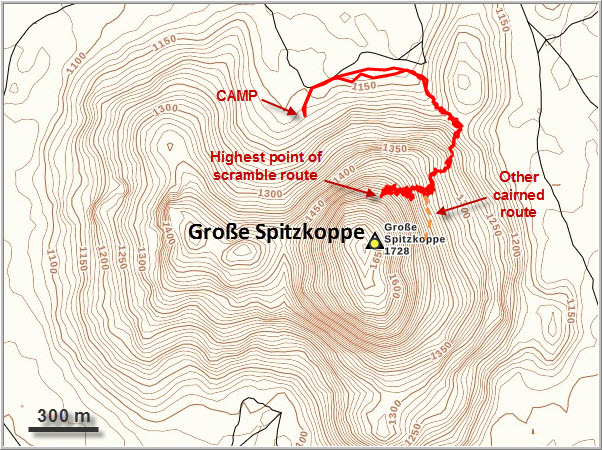
DISCLAIMER: Use at your own risk for general guidance only! Do not follow this GPX track blindly but use your own judgement in assessing terrain and choosing the safest route.
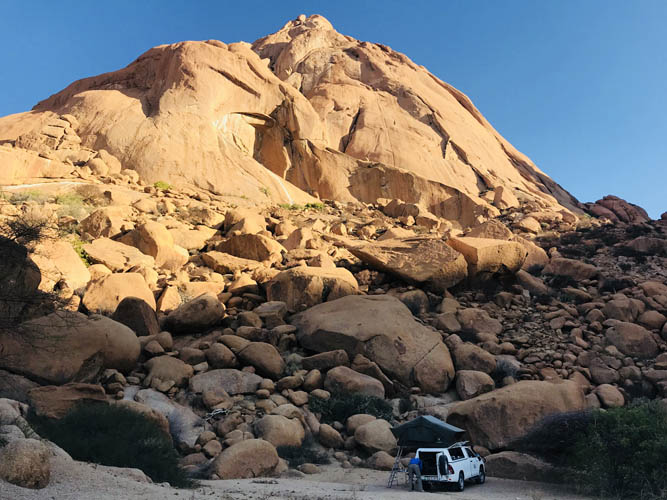
What a scenic spot to camp!
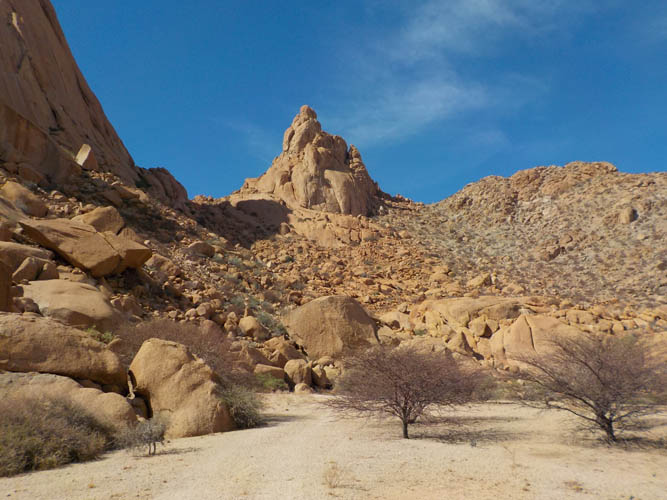
Jagged towers and boulder fields form the backdrop to our campsite.
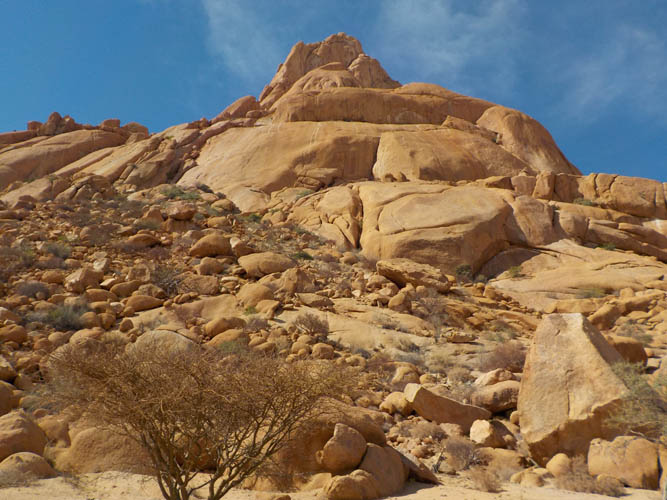
A look at the north face: the summit is somewhere up there, 700 m above us!
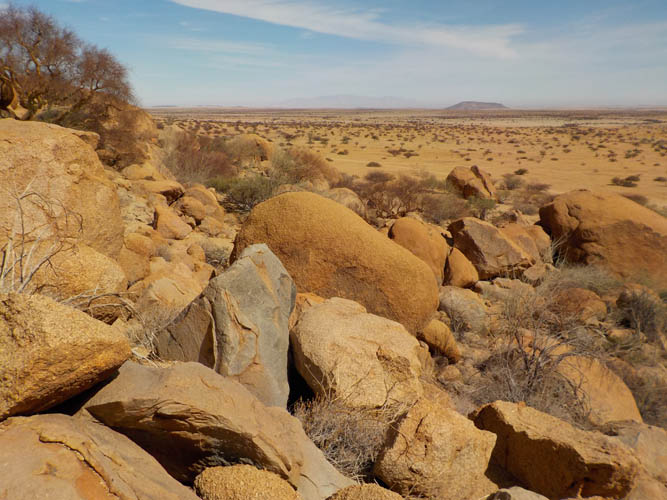
Large boulders at the entrance to our approach valley.
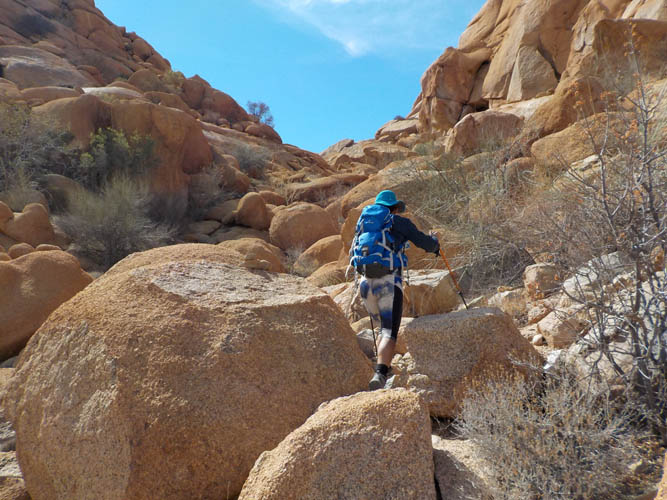
Hiking up the approach valley.
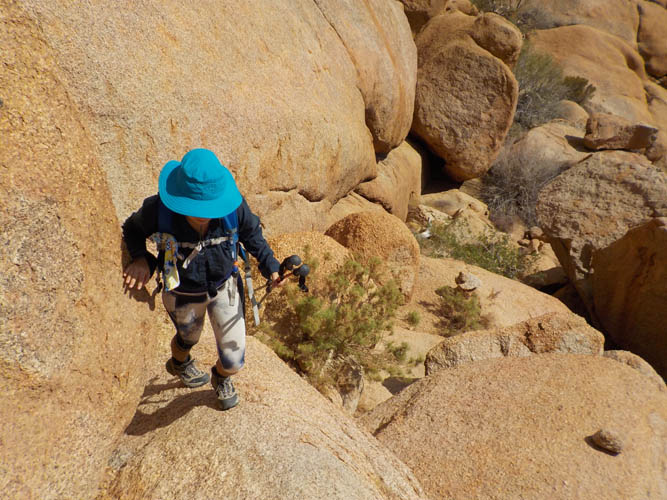
Cairns show us the way. Some boulder hopping is necessary.
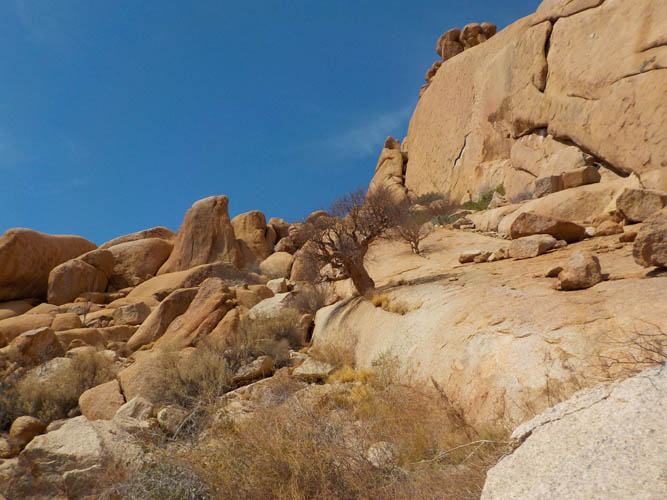
Nearing the saddle.
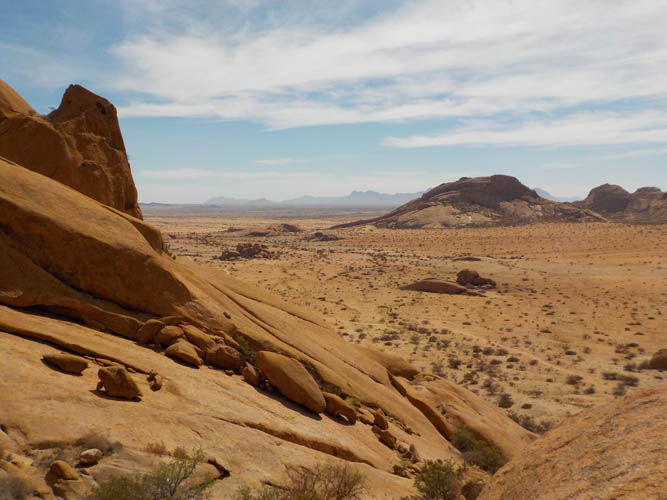
View down the other side of the saddle towards the Pontok Mountains.
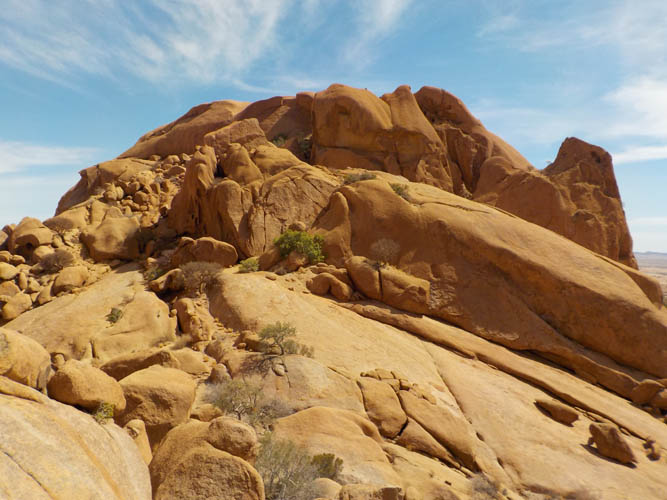
This is the small outlier NE of the Große Spitzkoppe summit.
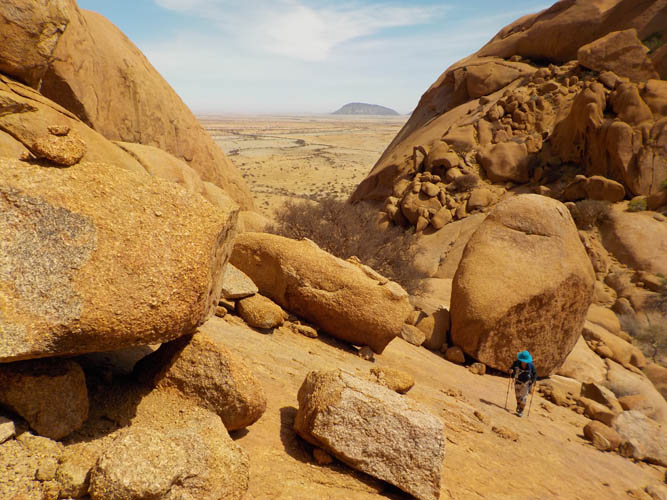
Wen coming up a slanted rock slab.
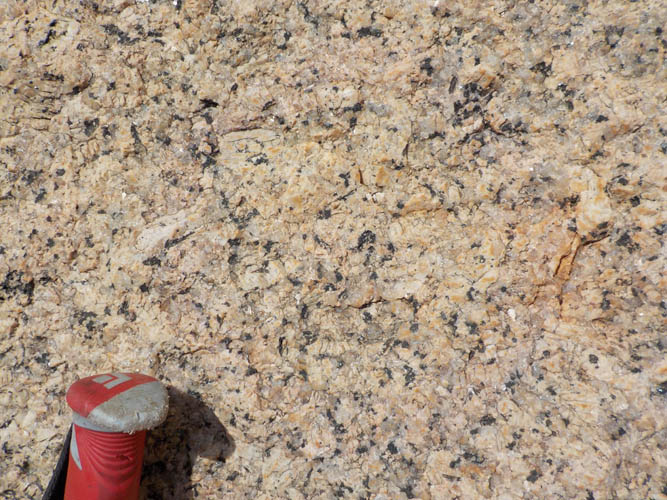
It’s almost all solid granite here.
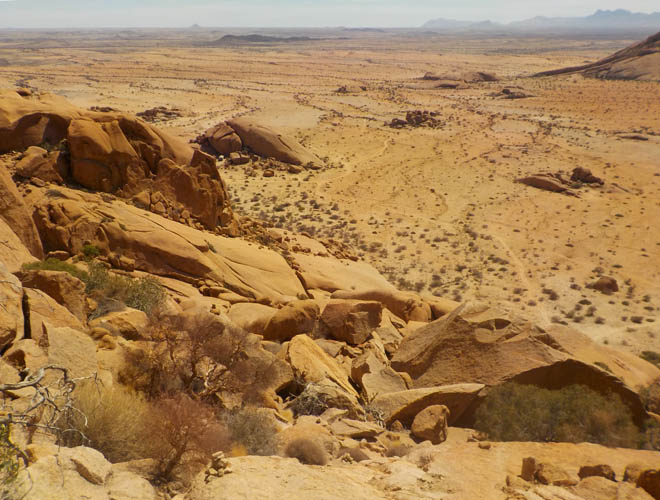
Views of the desert plains below. The Erongo Mountains can just about be seen on the horizon at the far right.
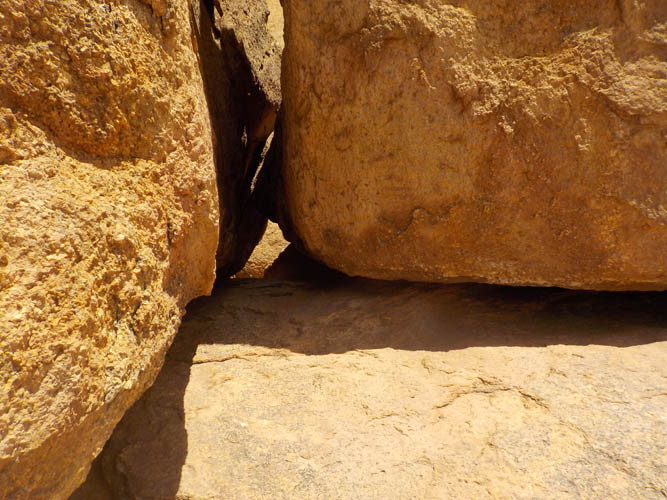
One of the cracks we had to squeeze through.
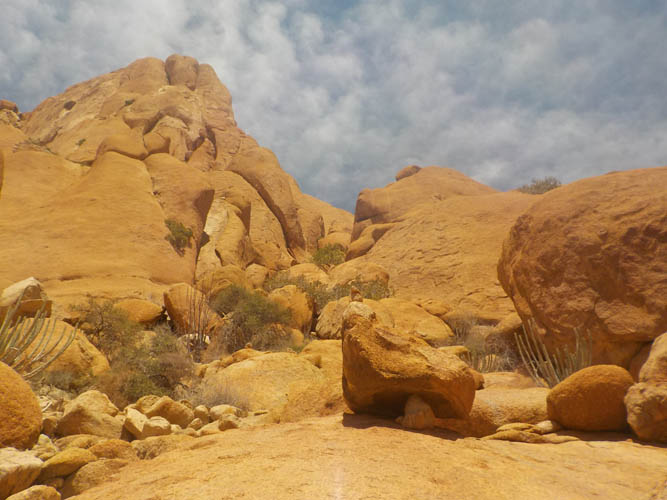
The summit tower looks increasingly difficult as the terrain gets steeper.
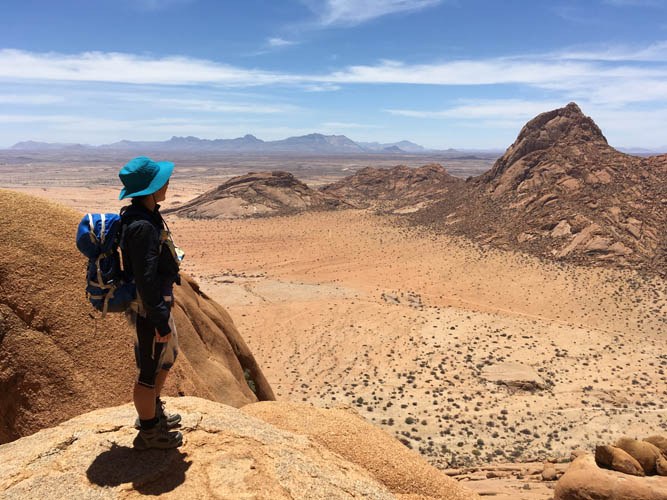
Fantastic views on a gorgeous day!
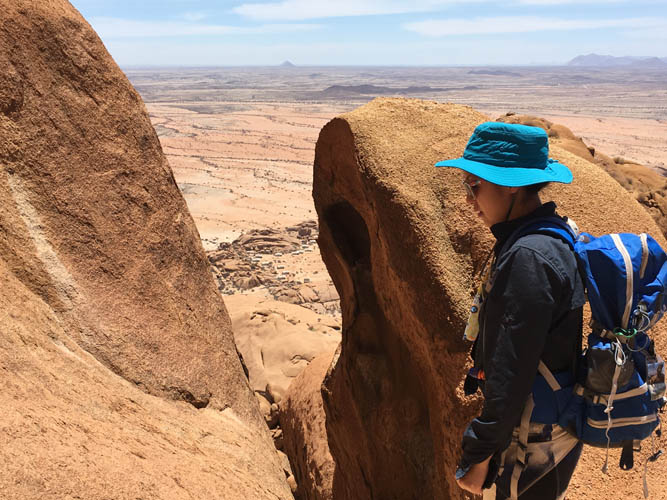
The huts of the Spitzkoppe Lodge can be seen through the crack below.
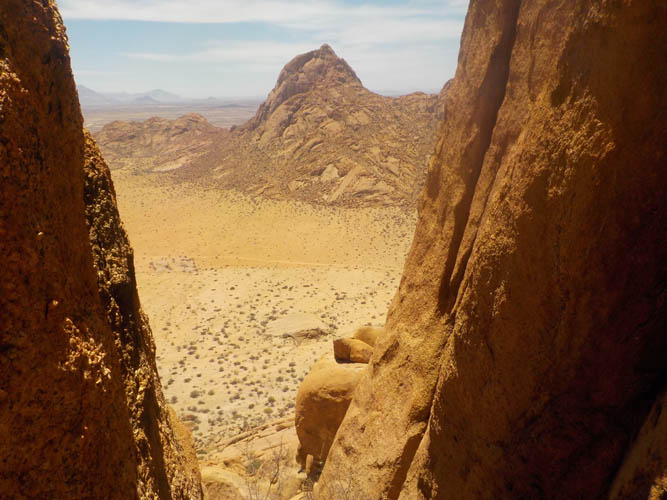
One of the peaks of the Pontok Mountains.
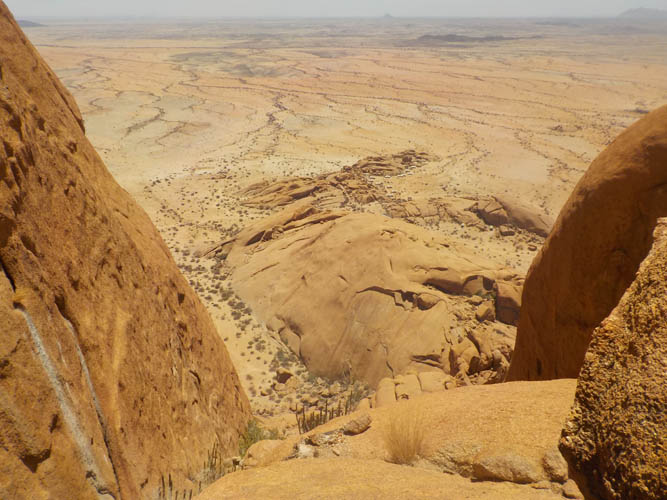
It’s starting to get airy up here!
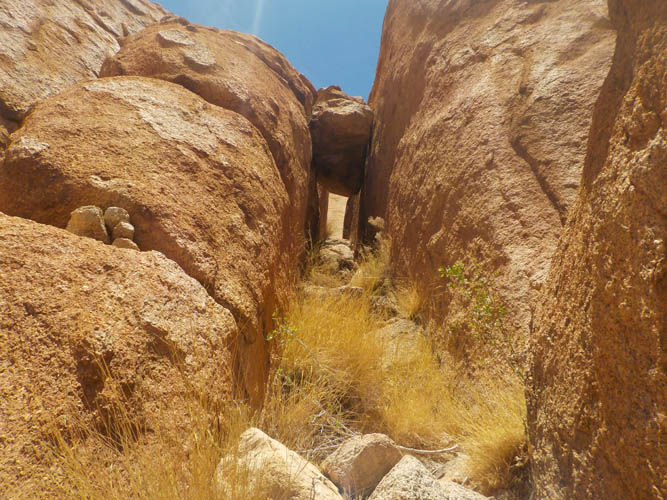
Entrance to the tunnel crack near the end of our scramble.
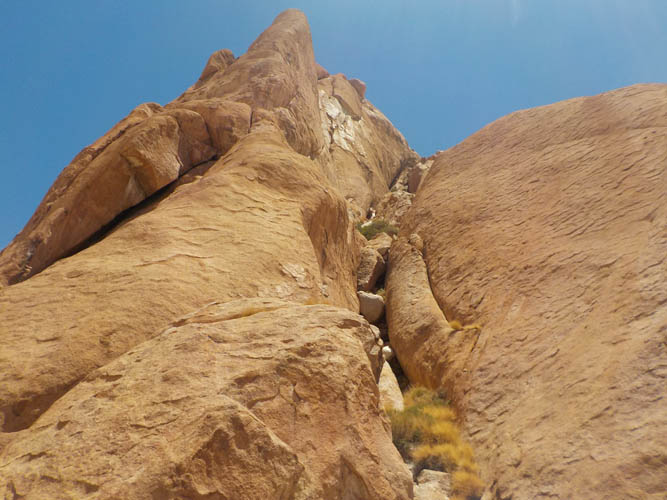
The end of the road: steep, smooth slabs with an exhilarating drop below mark the end of our scramble route. From here on it’s a technical climb.
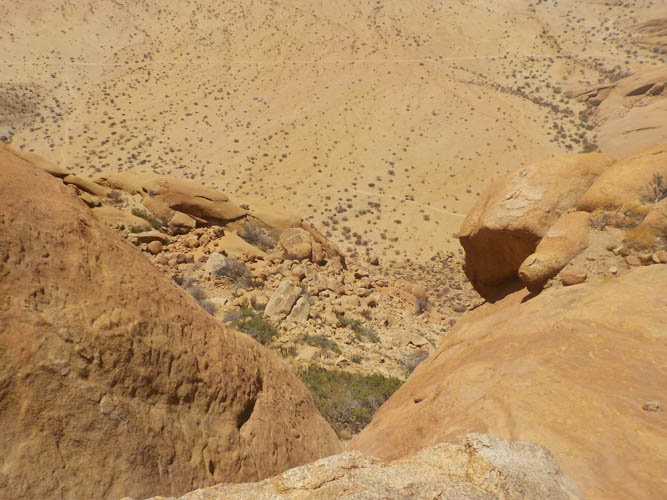
Some pretty crazy exposure here!
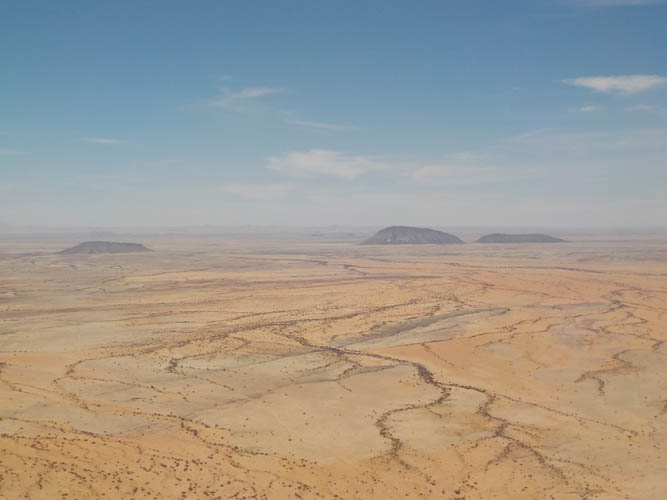
Sweeping views of a vast desert expanse, dotted by three small inselbergs.
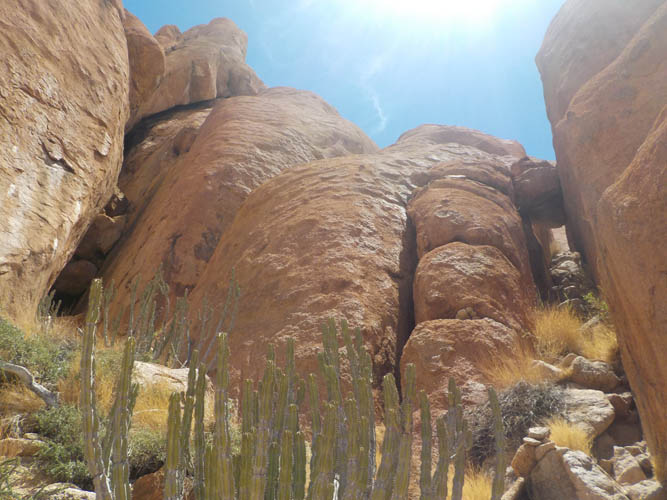
Looking back at the crack we came through on our way down.

We had to take off our packs to be able to squeeze through some boulders.
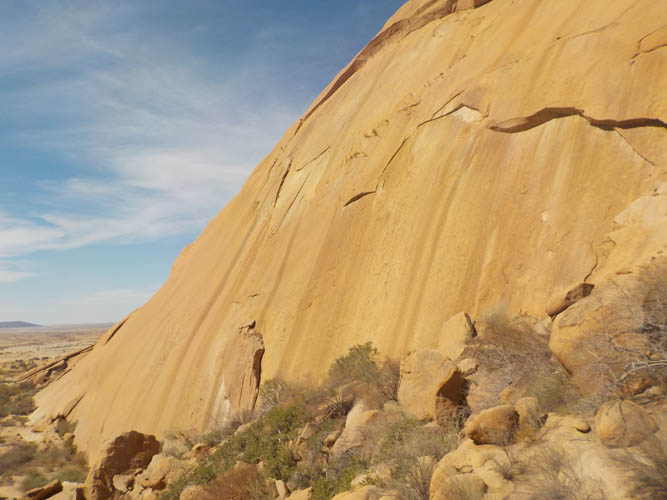
A round granite dome with huge, smooth walls sits just north of the approach valley.
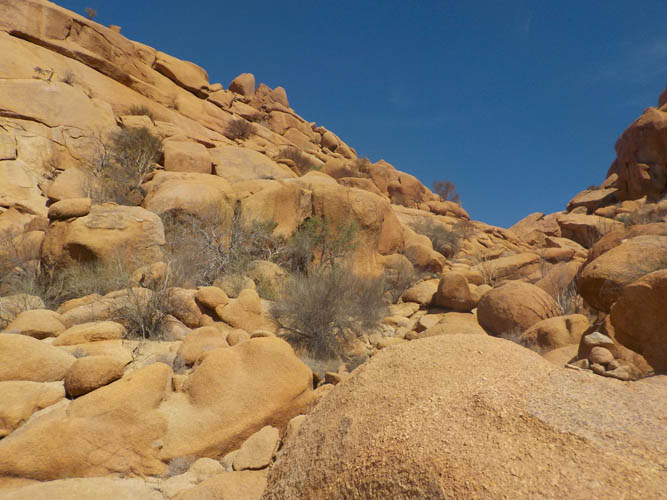
At the bottom of the approach valley, looking back up.
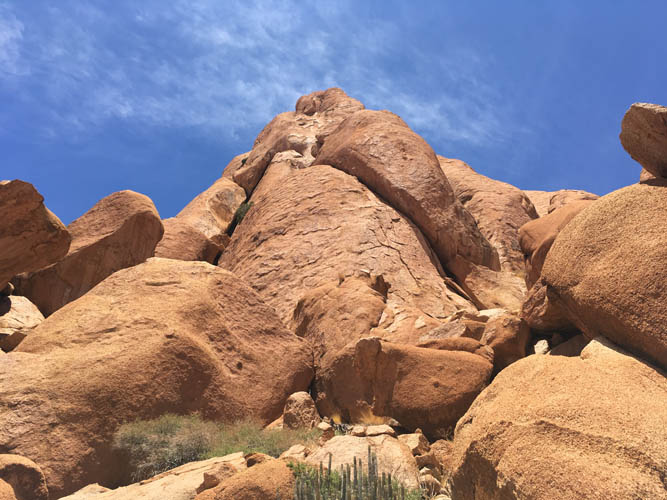
One last look at the summit tower from below.
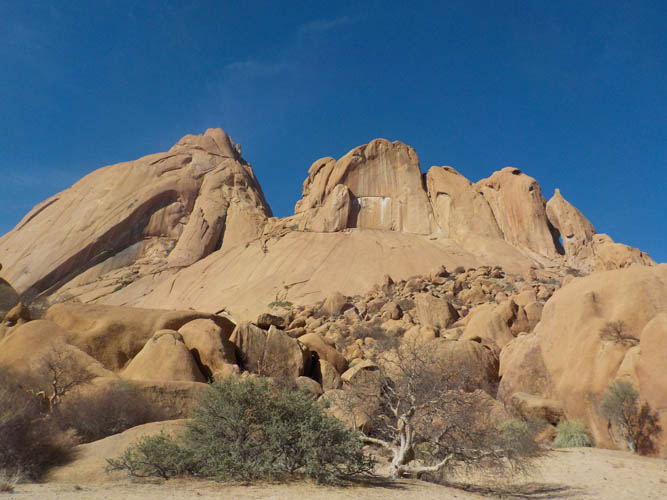
And a look at the Große Spitzkoppe from the south as we drive out.
